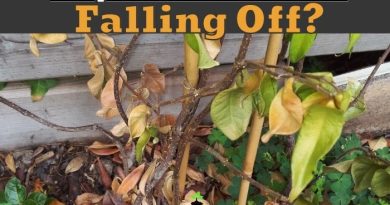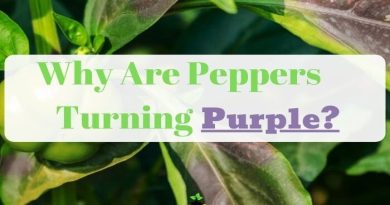10 Reasons Why are Anthurium Leaves Turning Yellow? (& What to Do)
Does your Anthurium have yellow leaves? By excluding one by one the causes listed in this post, you will be able to understand with certainty why are anthurium leaves turning yellow.
This post will help you understand why and what to do to fix this problem and prevent it.
The yellow leaves of Anthurium can be the consequence of many factors including: waterlogging, low humidity, improper soil, excess or lack of light, environmental or due to diseases.
In this article we go to see the 10 most frequent reasons why anthurium leaves are turning yellow. Starting from the most common one up to the less usual one.
| Causes of Anthurium Leaves Turning Yellow: |
|---|
| 1. Waterlogging |
| 2. Low Humidity |
| 3. Improper Soil |
| 4. Excess of Light |
| 5. Lack of Light |
| 6. Low Temperature |
| 7. Insufficient or excessive fertilization |
| 8. Fungal diseases |
| 9. Bacterial infections |
| 10. Leaf turnover |
Causes of Anthurium Leaves Turning Yellow
1. Waterlogging
The most common cause that leads to Anthurium having yellow leaves is waterlogging (watering too often). For convenience or routine we tend to water at regular intervals (once a week or on Saturday morning) without taking into account the actual needs of the plant.
Anthurium watering should be done when the soil is dry during the winter and when it is almost dry during the summer. If you do not give the substrate time to dry enough, you will encounter water stagnation and consequently yellow leaves, root or collar rot and a series of diseases that are triggered as a result.
To understand if the leaves are yellowed due to excess water, check the soil one centimeter below the surface. It will most likely be damp. Then look at the color of the stem and the leaf.
If the petiole is yellow and the leaf is yellowing from the attachment with it, you will have confirmation that the problem is due to water stagnation.
How to fix Anthurium yellow leaves due to Waterlogging
If the problem is minor it will be sufficient to allow the soil to dry well before watering the Anthurium again, making sure that it is not only dry on the surface but also two centimeters deep.
In the event that the Anthurium has many yellow leaves and water stagnation has caused serious problems, it is advisable to flare the plant to check that there is no root rot (which is due to a fungus called Pythium).
In this case it will be better to clean the root system from the soil and cut the rotten roots with sterilized scissors. Then repot the Anthurium in a clean pot with new soil and wait a few days before watering again.
Keep the plant under observation, if the problem persists it may need to be treated with a systemic fungicide.
2. Low Humidity
Anthurium is a tropical plant that grows in humid environments with humidity rates exceeding 70%. Very low ambient humidity (<40-45%) can cause peripheral dehydration making Anthurium leaves turning yellow from the tip and long at the edges.
Usually dry air does not compromise the entire leaf but rather dries up the tips and edges of many scattered leaves.
In addition to causing dry yellow leaves in Anthurium, it greatly slows down the growth of the plant which struggles to keep the stomata open and to exchange air with the surrounding environment.
Low humidity causes symptoms similar to the accumulation of fertilizer in the soil, to be sure that the problem is due to the U / R you should measure the level using a hygrometer .
Because Anthurium is a tropical plant the humidity in the room is not always proper. If you notice that your Anthurium’s leaves are turning yellow make sure you have watered your plant carefully, the problem may be low humidity.
How to fix Anthurium yellow leaves due to Low Humidity
There are several ways to increase the humidity around our Anthurium plants, such as:
- Bring the plants together to create a microclimate between their leaves
- Add some aggregates and a drizzle of water to the saucers (making sure it does not touch the vase)
- Put humidifiers on the heaters when they are on
- Move the plants to the bathroom or kitchen which are usually the most humid rooms
- Use an ultrasonic humidifier (very effective).
Once the problem has been resolved and the humidity returned to acceptable levels (> 50%) you can cut the yellow or dry parts of the Anthurium leaves with sterilized scissors.
Speaking of trimming, here is how are the best methods how to trim cilantro!
3. Improper Soil
Anthurium is an epiphytic plant that adapts very well to life in pots as long as a soft and airy soil is used, composed of both fine particles and larger pieces. Poorly draining soil predisposes your plant to root rot , which will cause the leaves of your Anthurium to turn yellow .
A compact and poorly draining substrate prevent water from flowing out and air from circulating in the compost, with consequences similar to water stagnation.
Another circumstance is that in which the soil has degraded over time, or limestone accumulations have created which have made it harder and more compact.
Anthuriums cannot stand planting in a substrate that becomes too dense over time, loses breathability, dries poorly in the lower part, and lacks drainage.
Whatever the cause, poor quality soil can cause Anthurium leaves to turn yellow from the petiole and expand towards the center of the leaf.
How to fix Anthurium yellow leaves due to Improper Soil
If your Anthurium’s soil is old, compact and poorly draining, the best thing to do is to repot the plant immediately. Make sure you use a pot of the right size, with drainage holes and a good substrate.
4. Excess of Light
A very common problem that Anthurium leaves turn yellow is because the light is too bright. This happens especially in spring and summer when the plant is left exposed to the sun or where indirect light is very strong.
Direct sun on the leaves of the anthurium or location in diffused light on a too hot southern windowsill (in addition, spraying or wetting the leaves in the sun) leads to yellowing of the leaves. Even without burns, the anthurium may turn yellow, signaling an excess of lighting.
Unlike winter and late autumn, in the hot months the radiation is very intense, especially during the central hours of the day.
If it remains exposed to the sun at this time of the year, the Anthurium will begin to have discolored yellow leaves or real burns if it receives direct rays and the days are particularly bright.
The same can happen to flowers , or rather to spades.
How to fix Anthurium yellow leaves due to Excess Light
If your Anthurium has yellow leaves due to too much light, make sure it doesn’t get direct sun and possibly move it to a slightly shady place.
A valid alternative is to use opacifying curtains to partially screen the light entering the window.
From October to March, however, the plant can safely receive all the light it can give it because the sun’s rays are not so strong.
The most damaged leaves can be removed, especially those burned by the sun because these lesions could become the entry point for fungal or bacterial infections.
5. Lack of Light
Another reason why Anthurium gets yellow leaves may be due to lack of light and usually in the location is too dark for the plant. Then place the Anthurium flower in a bright east or west window or use a plant lamp to compensate for the lack of light.
Anthurium thrive on the soil of sparse rainforests or as epiphytes on the jungle giants. As a result, they need a lot of light. In the blazing sun or in the shade, however, the ornamental plants do not feel comfortable.
In order to prevent such discoloration of the leaves, it is advisable to give it a spot in front of a sunny window and to shade it when the sun is shining or on sunny days.
Even in winter, the location should be bright enough. The chosen location is optimal when the leaves of the anthurium are shiny and it forms new flowers regularly.
6. Low Temperature
Another very common problem that causes yellow leaves in Anthurium is cold or low temperatures. These plants do not tolerate temperatures below 59°F (15 °C) or prolonged cold drafts.
If the light conditions correspond to the needs of the plants, unfavorable temperatures or temperature fluctuations can be the cause of yellow leaf tips. Most often, it reacts to low temperatures with yellowing of the leaf tips.
The same happens if the leaves touch a cold surface, such as a window in winter.
Cold damage not only affects the leaves but also the flowers, they become evident only a few days after exposure to low temperatures making it difficult to associate the cause to the effect.
Anthurium often suffer from the cold during transport and the leaves turn yellow and stain a few days later when they have acclimatized to the home environment.
The Anthurium loves harmonious climatic conditions and should not be exposed to any major temperature fluctuations.
In addition, temperatures that are too low have side effects, such as:
- Weaken the immune system
- They reduce the need for water, which increases the risk of water stagnation
- They favor the proliferation of fungi
How to fix Anthurium yellow leaves due to Low Temperature
The first thing to do is to make sure that the temperature in the room does not drop below 59°F (15 °C) and that the Anthurium is protected from cold drafts. Subsequently, the plant must be kept under observation for about ten days.
It is necessary to understand if it is actually cold damage and not fungal diseases.
In the first case the situation should stop in about ten days, while in the case of mushrooms (which we will see in a moment) the problem continues to extend over time.
Once we are certain that the yellow leaves of the Anthurium (or the spots) are due to the cold we can let our guard down. At this point it will be enough to guarantee optimal temperatures, while the damaged leaves can be partially or completely removed.
7. Insufficient fertilization
The lack of particular elements such as Nitrogen, Iron and Sulfur can cause the Anthurium leaves to turn yellow. Excess fertilizer can also cause similar symptoms by creating accumulations of salts or changing the pH of the soil and causing blockages in absorption.
Practically the plant shows symptoms of deficiency when in reality the cause is due to too much fertilizer.
This usually happens in three circumstances:
- It over-fertilizes during the winter when the plants absorb little nutrition.
- You use more fertilizer than what is stated on the label or you give it too often.
- When fertilizing, the plant does not get wet enough.
- An extra dose of water should always be given and allowed to drain from the drainage holes in order to rinse the salts that have accumulated from the previous fertilization.
Excessive salt build-up in the soil can lead to dehydration, preventing the roots from absorbing water properly. In this case, the leaves of the Anthurium not only turn yellow but also begin to dry out along the edges or on the tips.
Symptoms are similar to those of too low humidity but worsen faster if the problem is not resolved.
How to fix Anthurium yellow leaves due to Insufficient fertilization
In the event that the Anthurium shows signs of nutritional deficiency, it will be sufficient to fertilize with a fertilizer for flowering plants. The fertilizer must contain all the macro (NPK) and micro elements necessary for the plant and have higher concentrations of phosphorus (P) and potassium (K) to ensure good flowering.
If the problem is due to an absorption block or an accumulation of salts in the soil, you will have to water the soil abundantly with water only to rinse the excess minerals.
Quietly use double or triple the water that the jar can hold. For example, if you are using a 3-liter pot, water with 6-9 liters of water letting it run out of the drainage holes.
From the next watering, resume fertilizing using a reduced dose of fertilizer.
Remember not to fertilize during the winter, or to do it at a very low dosage making sure to wet with a generous amount of water (which has a rinsing effect on the soil).
Over-fertilization
Too much fertilizer can smother an anthurium and cause the lower leaves to turn yellow and have brown tips. Reduce fertilizer application to a minimum and filter the soil around the plant to dissolve unnecessary excess.
Basically, these plants are quite frugal in terms of nutrient requirements. But you can’t do it without fertilizer.
You fertilize about every two weeks with a commercial liquid fertilizer in half the concentration. It is important to ensure that the fertilizer is never applied to the dry substrate, this would burn the roots, which in turn causes leaf discoloration.
It is best to water sparingly at first and fertilize a few hours later. Fertilizers that are also used for orchids are well suited, because both species thrive in nature in one and the same habitat with very similar requirements.
8. Fungal diseases
Anthurium can be affected by numerous fungal diseases , some of which cause leaves to turn yellow, brown or black.
The most common of all is root rot (Pythium), often triggered by water stagnation affecting the roots, reducing their ability to absorb nutrients. The first visible sign is the yellowing of the leaves and petioles which subsequently wither and dry out.
Other fungi attack the leaves directly, usually by introducing themselves into plant tissues through lesions or following stagnation of water on the foliage or around the collar.
Fungal diseases manifest themselves differently depending on the fungus that attacks them. They can present with yellow or brown spots, dark spots or with widespread yellowing.
Usually the velvety leaf species are particularly sensitive, such as the Anthurium Clarinervium or the crystallinum.
How to fix Anthurium yellow leaves due to Fungal diseases
If you are concerned that Anthurium leaves are yellowing due to fungal diseases, it is important to act promptly.
Here’s what to do:
- Isolate diseased Anthurium to avoid infecting other plants
- Remove the most affected leaves or cut off the stained parts with sterilized scissors. The cut should be done where the fabrics are still healthy and green.
- Check that the collar and roots are in good condition.
- If the roots are rotten, you need to prune the dead ones and repot the plant with new soil.
- Treat the plant with a systemic fungicide to cure it and prevent the infection from starting again.
- Keep the Anthurium isolated and under observation for a couple of weeks before returning it to its place.
9. Bacterial infections
Fortunately, bacterial infections are not frequent in Anthurium but if they arise they can cause the plant to die quickly. Symptoms are yellow, watery-looking, foul-smelling spots on the Anthurium leaves.
They are very infectious and can easily pass from a plant by contact or by phytophagous parasites.
Often the bacteria settle in the plant through the stagnation of water on the leaves or because unsterilized scissors are used for pruning. They rapidly proliferate in hot and humid environments, compromising the health of the plant in a few days if the environmental conditions are unfavorable.
How to fix Anthurium yellow leaves due to Bacterial Infections
Immediately remove the Anthurium from other plants, then remove the yellow and spotted leaves at the root of the collar. Then sprinkle hydrogen peroxide (or specific antibacterial products) on the leaves.
10. Leaf senescence
As Anthurium grows and produces new leaves and flowers, the older ones gradually begin to yellow and dry out. This process is called leaf senescence and is completely normal.
If the yellow or dry leaf is the lowest one while the rest of the plant is green and healthy, there is nothing to worry about. The Anthurium plant is simply rejuvenating the foliage.
What to do
In this case, you do not have to do anything, just wait for the yellow leaf to dry and then remove it at the hairline with the collar.
How to Prevent Anthurium Leaves from Turning Yellow
Experts advise watering anthuriums once or twice a week with lukewarm rainwater and fertilizing regularly about every two weeks. Regular spraying with lime-free water is good for the leaves.
Normal potting soil with drainage made of gravel or expanded clay, orchid soil or hydroponics is recommended as a substrate. Faded or wilted flowers and leaves should be cut off.
Ways to prevent anthurium leaves from turning yellow:
- Avoid any hard water to water the substrate or spray on the leaves.
- Maintain a bed of gravel in water under the pot and spray the leaves with water (non-calcareous).
- Wait until the substrate has dried on the surface before watering again.
- Watch for scale insects, common insect pests on houseplants.
- Be careful not to keep the substrate permanently damp, excess water leads to rotting of the roots and the development of parasitic fungi.
Conclusion
As you have seen, there are so many reasons why Anthurium leaves are turning yellow. If you’ve noticed, many of these are related and can be traced back to waterlogging in the soil or on the leaves.
Having learned these reasons, we can discard the more serious problems. At this point we just have to keep the room sufficiently humid, give a pinch of fertilizer and diffused light to prevent Anthurium leaves turning yellow again.
Frequently Asked Questions
When there is an excess of cold or humidity, the plant can suffer and even die. The first symptom will be the yellowing of the leaves. It should be taken to a warmer and more ventilated place.
Find a happy medium by touching the substrate: if it is dry, it is time to water. Otherwise, the water supply can wait. You can add liquid fertilizer for indoor Anthurium plants every 14 days, mixed with the irrigation water.
If there are drafts , it is possible that the anthurium loses moisture through the leaves and ends up withering them, to preserve the rest of the plant.
Avoid placing the anthurium near an open window.
It is possible to save it by reboosting the plant. To make the leaves a little greener, start by renewing the soil of the anthurium by repotting it.
Also consider placing the plant in a room with high humidity, such as the bathroom . Also remember to take care of the foliage by misting and dusting it.




